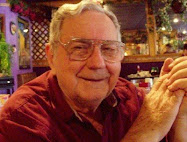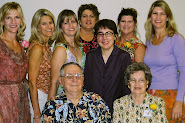I cannot tell one poison leaf from the other, but I know they both cause itching and make small blisters. One summer Sunday when I was eight or nine, my aunt called and said my cousin Elwood was at their house and we should come over and play with him. My brother was not at home, so I walked alone to my aunt’s house to play with Elwood.
Elwood was one of my city cousins, and things to do are limited when playing with someone wearing leather shoes, long stockings and “knicker” pants. He showed me the official Scout pocket knife that he had gotten that weekend. It had several blades, a screwdriver, an awl, a bottle opener, and I think even a secret compartment. Elwood had not used it yet, so I suggested going to the pine tree at the corner of the field. Walking past the tree earlier on my way to my aunt’s house I had noticed some vines growing up the trunk and I thought they should be cut. We walked back to the tree, cut each vine at ground level, pulled it loose from the bark, and reaching as high as we could, cut it again and threw the cut pieces over the fence into the field. When we had cut all of the vines we walked back to my aunt’s house, washed in the watering trough, and made our appearance just in time for the afternoon meal. No one asked where we had been.
The next afternoon my aunt called and said Elwood had been taken to the doctor with a bad case of poison oak/ivy. By this time I had small blisters on my hands that I treated with kerosene, our usual home remedy. My aunt bought some calamine lotion that dried up the blisters.
I had other minor attacks while still living with my parents but always controlled it with the pink lotion. However, in the next century my luck “ran out.”
Around the first of March in 2000 my oldest daughter Pam was already mowing the back yard when I came home, so I got the edger and edged the front and back yard. In the back there were some berry vines and other vines coming from the flower bed that tangled my edger. I took a garbage bag, got pruning shears and started to remove all of these vines by cutting them into about 16-inch lengths and dropping them into the bag. This effort helped to remove my guilt of letting someone else mow the yard.
Several days later I noticed small blisters, which rapidly became larger, on my right hand and both arms. (I had used a glove on my left hand for the berry vines.) It looked like poison oak or something similar. I started treating myself with calamine ointment and then calamine lotion and in about 10 days it started to dry up. I didn’t miss any meals but it kept me from volunteering at the hospital one week and I had to be careful hugging the grandchildren.

(If you look closely at this photo of me with my grandson Adam, both of us posing in our Handyman t-shirts, you can see calamine lotion on my right hand.)
About a week later my wife Priscilla asked when I planned to pull all the weeds in that bed and I said never. She then said that I should get two day laborers to clean the bed and I said that I would not ask anyone else to go in there and planned to spray the bed with weed killer. She objected to the weed killer idea. The following Saturday, she worked all afternoon pulling weeds in other parts of the yard, and again on Sunday afternoon while I was watching the basketball finals.
On Tuesday she came home before dark and pulled more weeds. When she came into the house she stood between me and the baseball game (the Astros were playing in their new ballpark on TV) and said that her brother had told her I should get someone to clean the rest of the beds. (How her brother in Nebraska got into this I don’t know.)
On Thursday (I don’t like to rush into things) I went to the local day-labor hiring hall. The laborers, understandably eager for paid work, rushed toward me like a bunch of cows running to a farmer’s truck with salt cubes on the back. I held up two fingers, meaning two workers, and seven fingers, meaning $7 per hour. Two guys got into my truck and when we came home I gave them each a pair of gloves, pruning shears and garbage bags, pointed to the area Priscilla had already cleared and then pointed to the east and west fences, 100 feet apart, and made a get-to-work motion. They got on their knees and started pulling and cutting. When they had several bags full I lifted them into the wheelbarrow, very carefully touching the bags only with my fingers and the palms of my hands, and hauled them to the front yard for the trash truck. (What I realized several days later was that when the bags were heavy I brushed them on the front of my pants while putting them in and taking them out of the wheelbarrow.) In between I busied myself with trimming trees, tying the branches into bundles and taking them to the street, mowing the back yard, smashing cans and taking a load to the recycle place, giving my workers ice water and each a large slice of banana nut bread, buying each of us a hamburger (Burger King had a special, 99 cents each), getting a haircut and hauling bags of the workers’ cuttings to the street. When the workers were finished I paid them $50 apiece, drove them back to the hiring hall and then came home and took a shower.
Saturday while driving to Fort Worth I noticed that the top of my right thumb was itching and by the time I got there small blisters were appearing. I thought I could live with this but when I went to bed I noticed some itching on that part of my body immediately behind the zipper on my pants. Examination showed patches of small blisters – but again, I didn’t panic, because I had a doctor appointment Monday for my annual checkup. Sunday I went to both services with my son Tim, a church organist, and stayed in town for his recital that afternoon. I didn’t scratch my private area in public but I was tempted.
Monday my doctor looked at the blisters on my hands and said that doesn’t look too bad. I asked if he wanted to see the worst area and he said no, my nurse will give you a shot that will take about 24 hours to give relief. The shot helped – most of the itching soon improved and no blisters got large enough to drain and break.
I did not drive by the hiring hall for quite some time afterward, fearing that my truck might be recognized. I have also avoided the flower bed. If forced to go near it again I will have a blowtorch in my left hand and a spray bottle of weed killer in my right.











